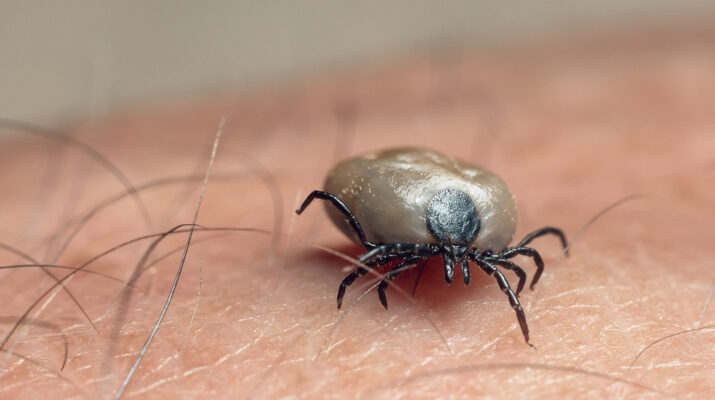By Barbara Pierce

Tick season is here. Ticks are a huge problem here in the Mohawk Valley. Experts say that this tick season is worse than previous years. Climate change has contributed to making it worse. Ticks will be active through November. As we all know, they live in grassy fields and in the woods.
We asked nurse practitioner Jennifer Kohler, who works at Integrative Medicine of Central New York in Chittenango, what is important for us to know about ticks and how to remove them.
She added that the information provided for this article is based on Guidelines from ILADS (the International Lyme and Associated Disease Society).
1. Why does it matter?
We have all heard that we need to be careful about protecting ourselves against tick bites. Those doing research on ticks in our area found that one-third of ticks carry at least one disease. Even a single tick bite can pass on several diseases.
So yes, it matters a great deal, as Lyme and other tick-borne illnesses have the potential to cause disability and chronic health problems, said Kohler. (There are no vaccines against tick-borne diseases.)
2. How do I remove a tick?
“It’s important to remove the tick as soon as possible to decrease the risk of pathogen transmission,” said Kohler. A pathogen is a bacterium, virus, or other organism that can cause disease.
“Studies have shown that pathogen transmission can occur early (less than 24 hours after attachment). In animal models, transmission can occur in less than 16 hours. The minimum attachment time for transmission of infection has never been established,” she explained.
Removing a tick is easy, but it’s important to stay calm and avoid causing stress to the tick or yourself. Don’t use alcohol, Vaseline, gasoline, nail polish, or a match.
“There are numerous tick removal tools on the market. While these can be helpful, they are not necessary in removing a tick,” she added. “Use the most basic fine-tipped tweezers to remove the tick. Whether you’re using a tick removal tool or tweezers, it’s important to grasp the tick as close to the skin’s surface as possible. Do not twist or jerk while removing. Use slow, even pressure while pulling it straight out. Do not squeeze the tick.”
“After removing the tick, wash your hands and the bite area thoroughly with soap and water.
We highly encourage sending the tick for testing to help treatment,” said Kohler. (Resources for testing can be found online.)
Redness at the site should go away in a few days. If the area becomes red, warm, or painful, contact your health care provider.
3. How do I know if I could have Lyme disease or another disease caused by the tick?
According to the CDC, many tickborne diseases have similar signs and symptoms. If you get a tick bite and develop the symptoms below within a few weeks, see your healthcare provider.
The most common symptoms of tick-related illnesses include: fever or chills; headache, muscle aches, joint pain, or fatigue; or rash, the most recognizable sign of Lyme is a red bullseye-shaped rash.
4. Is Lyme disease treatable?
Evidence shows that the disease-causing agents that ticks carry happen rapidly, and the fact that have the potential for disability and chronic health problems, ILADS recommends treatment to prevent such a disease for 20 days, said Kohler. “However, if there is a concern or clinical finding that acute Lyme disease is present, then treatment would be recommended for four to six weeks.”
Early treatment of Lyme disease involves antibiotics and almost always results in a full cure says the NY State Health Department online. However, the chances of a complete cure decrease if treatment is delayed. In a small number of cases, Lyme disease can become a chronic condition. However, some patients have reported slow improvement and even an end to symptoms, months or even years after treatment.
5. How to prevent getting a tick?
The New York State Health Department says your best protection is to avoid contact with soil, leaf litter and vegetation. However, if you garden, hike, camp, hunt, work or otherwise spend time in the outdoors, you can still protect yourself by the following:
• Wear enclosed shoes, long pants and a long-sleeved shirt. Tuck pant legs into socks or boots and shirt into pants.
• Wear light-colored clothing with a tight weave to spot ticks easily.
• Check clothes and any exposed skin frequently for ticks while outdoors.
• Consider using insect repellent.
• Stay on cleared, well-traveled trails. Walk in the center of trails. Avoid dense woods and bushy areas.
• Avoid sitting directly on the ground or on stone walls.
• Keep long hair tied back, especially when gardening.
• Bathe or shower as soon as possible after going indoors (preferably within two hours) to wash off and more easily find ticks that may be on you.
• Do a final, full-body tick check at the end of the day (also check children and pets) and remove ticks promptly.

